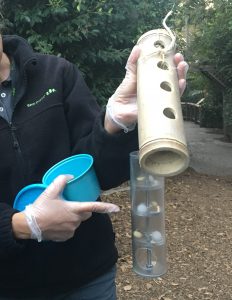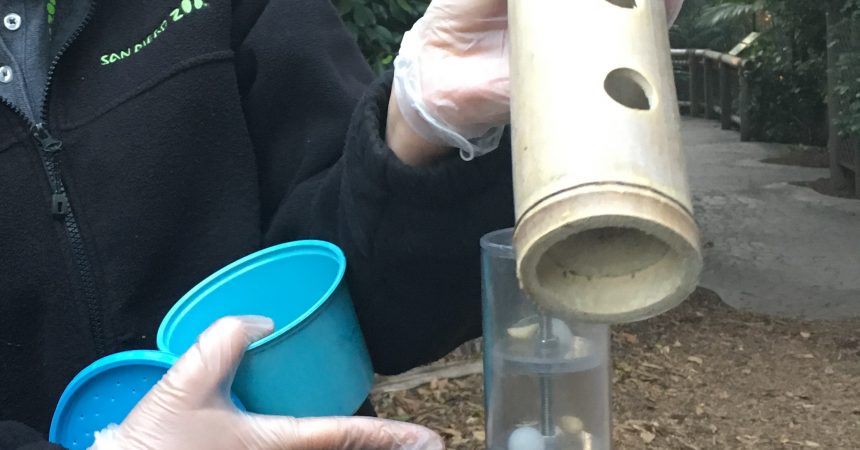Zoo InternQuest is a seven-week career exploration program for San Diego County high school juniors and seniors. Students have the unique opportunity to meet professionals working for the San Diego Zoo, Safari Park, and Institute for Conservation Research, learn about their jobs, and then blog about their experience online. Follow their adventures here on the Zoo’s website!
 When I was younger, my parents always encouraged me to do jigsaw puzzles and sudoku to keep me busy and to keep my mind active. I was and still am terrible at them, but they did their job of curing my boredom and working my brain. Just like us, animals also need activities to occupy them and to encourage natural behaviors you would see in the wild. This is where animal welfare specialists come in!
When I was younger, my parents always encouraged me to do jigsaw puzzles and sudoku to keep me busy and to keep my mind active. I was and still am terrible at them, but they did their job of curing my boredom and working my brain. Just like us, animals also need activities to occupy them and to encourage natural behaviors you would see in the wild. This is where animal welfare specialists come in!
This week, we met with Animal Welfare Specialist Jessica Sheftel who works at the San Diego Zoo. We began our afternoon with learning what welfare means in terms of the animals. It’s centered around how an animal is doing; this involves enrichment, nutrition, vet services, husbandry, and training. These all have the common goal of helping the animals thrive whether it be through a well-balanced diet, grooming, optimal health, natural bahaviors, or having control and the ability to choose what they want to do. Ms. Sheftel works mainly with the enrichment aspect of welfare. When the Zoo first opened, enrichment started as giving the animals something to keep them busy. It has since evolved into giving the animals something that encourages specific behaviors, especially behavior that the animal would exhibit in the wild. For example, snow leopards would usually hunt for their food in the wild but in captivity, they don’t get the chance to do that. To encourage certain behaviors, the Zoo may hang their food from a pulley so that a big cat, like a snow leopard, has to work and use its muscles to get to the food. Enrichment exists to ensure that all the animals at the Zoo stay healthy physically and mentally.
We then had the opportunity to be animal welfare specialists and design an exhibit for ourselves. We split into three groups and picked three different animals to design an exhibit for: a hippo, a mountain goat, and a grizzly bear. It was unexpectedly difficult to design a simple shoebox- sized diorama for each animal, especially with not knowing very much about them. The placement of everything in the exhibit had to be just right and other factors had to be considered too, like plumbing and if the animal would damage the exhibit.
After designing our own enriching exhibits, we got to go out and see Ms. Sheftel in action. We visited the squirrel monkey exhibit and I can confidently say that they are one of the most adorable animals at the Zoo. When we first arrived at the exhibit, Ms. Sheftel showed us a feeder with little holes in it. By putting all the food and snacks in there, the monkeys have to figure out how to get the food out. When she went into the exhibit, she scattered the feeders in different areas; even going so far as to hang them up in places where it would be really difficult for the monkeys to get to. This encourages the monkeys to think about how to get to the food and work for it, which is similar to how they would forage for food in the wild. It was incredible to see how quickly the monkeys were able to figure out the puzzles to get the food.
Just like how solving a jigsaw or sudoku puzzle makes us really think and is healthy for our brains, enrichment does the same for the animals at the Zoo. By giving the animals not just something to do but also encourage specific behaviors, it ensures that they are physically and mentally healthy.
Andi, Real World Team
Week Six, Fall Session 2017


